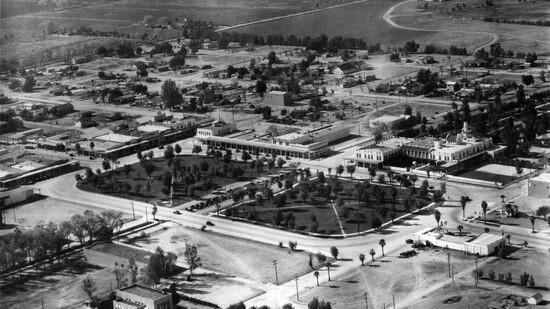On May 16, 1912, when Arizona was a mere three months in to being the 48th state of the Union, Dr. A. J. Chandler was anxiously awaiting customers and potential residents to purchase lots in the fledgling town of Chandler. But let’s back up a bit. Who was Dr. Chandler?
Chandler was a bright, ambitious young man who was only 28 when he came to Arizona in 1887 to be the territory’s first veterinary surgeon. A Canadian by birth, he had attended Montreal Vetrinarian College, where he graduated at the top of his class. Moving south to Detroit, he set up a very profitable veterinary practice.
On being recruited to come to Arizona, he arrived in Prescott, then the capital, to assume his duties of improving the cattle industry as Arizona’s chief veterinary surgeon. But a disheartened Chandler soon realized the area was in the middle of a severe drought. All he could see was what seemed to be a bone dry, withered, and barren wasteland. After only 30 days at his job, he submitted his resignation and made plans to move on to California.
And then the rains came! On what was to be the last night that Chandler would be spending in Arizona, there was a torrential downpour. From his room at the Commercial Hotel in Phoenix, he witnessed the deluge as he finalized his plans to leave early the next day. Then came word that all rail transportation to California was delayed because several bridges had been washed out by the heavy rains.
Being forced to stay, Chandler accepted an invitation to visit the ranch of Charles M. Bruce in Southern Arizona. The rains had brought the thirsty desert to life and Chandler saw it in a new light. Cattle were grazing in tall grasses, wildflowers bloomed everywhere, and water was running in the normally dry washes. He was encouraged to see what could be accomplished when water was brought to the arid region. With the promise of a beautiful desert that had endless potential, the doctor reconsidered his resignation and stayed in Arizona to pursue his dreams.
Before settling for good in Arizona, he went to Los Angeles and while there, he visited water projects and educated himself in irrigation engineering.
What ensued in the following years involved brilliance, as well as vision and lots of hard work on the part of Chandler and his associates. He faced one challenge after another in his efforts to bring water to the desert, but he never let those disappointments taint his vision.
In 1890, he purchased 80 acres south of the town of Mesa and established a small ranch. Coincidentally, Chandler also became a U.S. Citizen in 1890, on November 22. He knew he was in Arizona to stay.
With the introduction of irrigation and plentiful groundwater and water from the Salt River, Chandler Ranch grew into a thriving, if small, settlement. With the water, Chandler was able to irrigate 3,000 acres and provide alfalfa and grain for 2,000 head of cattle and several thousand sheep. Another community known as Headquarters Camp sprang up on the northeast corner of Arizona Avenue and Ray Road. It had a blacksmith shop, a ranch house, a school, and two wells. Chandler’s years of hard work and dedication to his dream were paying off and by 1904 he owned 18,000 acres.
And the rains came again! On May 16, 1912, early morning rains were hampering the workers’ efforts to hang banners and raise the 48-state flag above the townsite office. The rains made the graded dirt roads a slippery mess, but that didn’t dampen the mood of Chandler and his associates as they prepared to sell land to would-be residents. Trains brought people from Mesa and Phoenix. Visitors were enthusiastically greeted and taken on tours of the “town,” which only included the townsite office, a row of tent houses, a general store, and a dining hall.
But that was enough to encourage buyers because by the end of the day, over $50,000 in lots were sold and Chandler was born!
Over 100 years later, as we enjoy our beautiful, thriving city of 280,000, let’s remember and appreciate the tenacity and foresight of our founding father, a young, ambitious veterinarian who never lost sight of his dream of creating a jewel in the desert.
